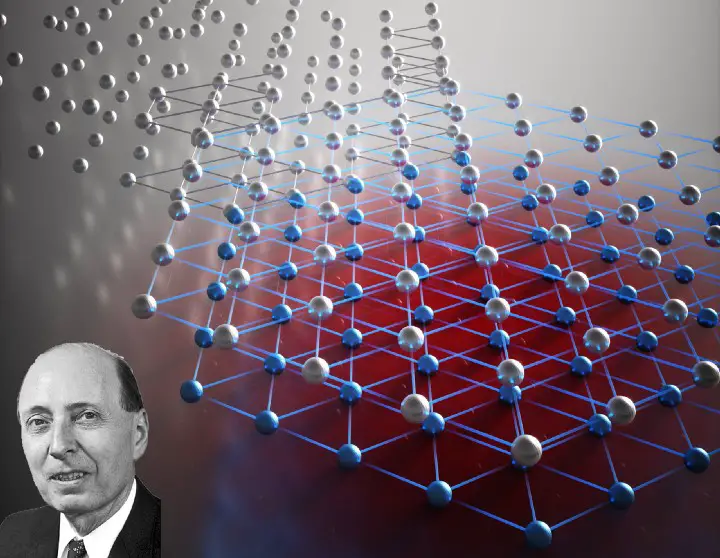 always end up talking about scientists within history that were simply ahead of their time, but sadly technology just wasn’t advanced enough for them to put their theories into practice and prove to the world that their theories weren’t fairytales. This so-called new material is a Wigner Crystal, a solid object made entirely out of electrons. A solid usually is held in place by the constant vibration of particles that create what physicians call “a solid-state”. A Wigner Crystal has its particles stable without the need for vibration. This is because the potential energy dominates the kinetic energy at low densities.
always end up talking about scientists within history that were simply ahead of their time, but sadly technology just wasn’t advanced enough for them to put their theories into practice and prove to the world that their theories weren’t fairytales. This so-called new material is a Wigner Crystal, a solid object made entirely out of electrons. A solid usually is held in place by the constant vibration of particles that create what physicians call “a solid-state”. A Wigner Crystal has its particles stable without the need for vibration. This is because the potential energy dominates the kinetic energy at low densities.
An article was published on the 29th of September, 2021 proving the development of this solid material and its vast importance in the world of physics. This was arguably for the first time that science was able to change the structure of a solid at atomic levels.
First time being theorized

The first person to have thought of this was Eugene Wigner (hence the name of the crystal) who in 1934 made a prediction based on quantum mechanics. Wigner mentioned that when the electrons in metals (solids) are brought to extremely cold temperatures, they would form a rigid, non-electricity conducting structure in form of a crystal instead of having an electric current holding the particles in place by moving around at astonishing speeds.
At the time, the theory was not taken seriously as Wigner was considered by academia as an “amateur physicist”. With time Wigner proved a very important player within the world of physics as he was awarded the Nobel Prize in 1963 for his theory of the atomic nucleus and the elementary particles.
It was not just the status of Wigner at the time, but the theory itself was a bit contradictory to the laws of quantum mechanics. To simplify things here is a diagram showing how electrons would normally behave within a metal at absolute zero (-273 degrees Celsius) temperature compared to how a Wigner crystal does.

Some argue that this isn’t the first time a Wigner crystal was seen by the world. The first time this was developed based on the American Physical Society was in 1979, but the problem was that the scientists working on it were not able to show hard evidence of the theory put into practice as the technology was not advanced enough.
Wigner Crystal in its full microscopic splendor

Today, we are able to see with our very own eyes the atomic structure of a Wigner crystal just as shown in the image above. If the conditions are just right, the electrons inside the material will arrange themselves into a honeycomb pattern just present in the image above.
Interestingly enough, there is no camera that would be able to capture the Weigner crystal at a microscopic level, but scientists found a way around it. They used a microscope intended for observing surfaces at an atomic level known as STM (Scanning Tunneling Microscope). The microscope is able to detect the exact location of the blocked electrons by giving small electrical impulses.
The actual science behind this theory is much more complex than what I have simplified it to, but try to think of it as a solid within a solid. This has not only opened the world of science to new potential technologies, but most importantly it has opened the eyes of many people to the potential within the field of physics, especially when it comes to quantum mechanics.
Avid Writer with invaluable knowledge of Humanity!
Upcoming historian with over 30 million views online.
“You make your own life.”





